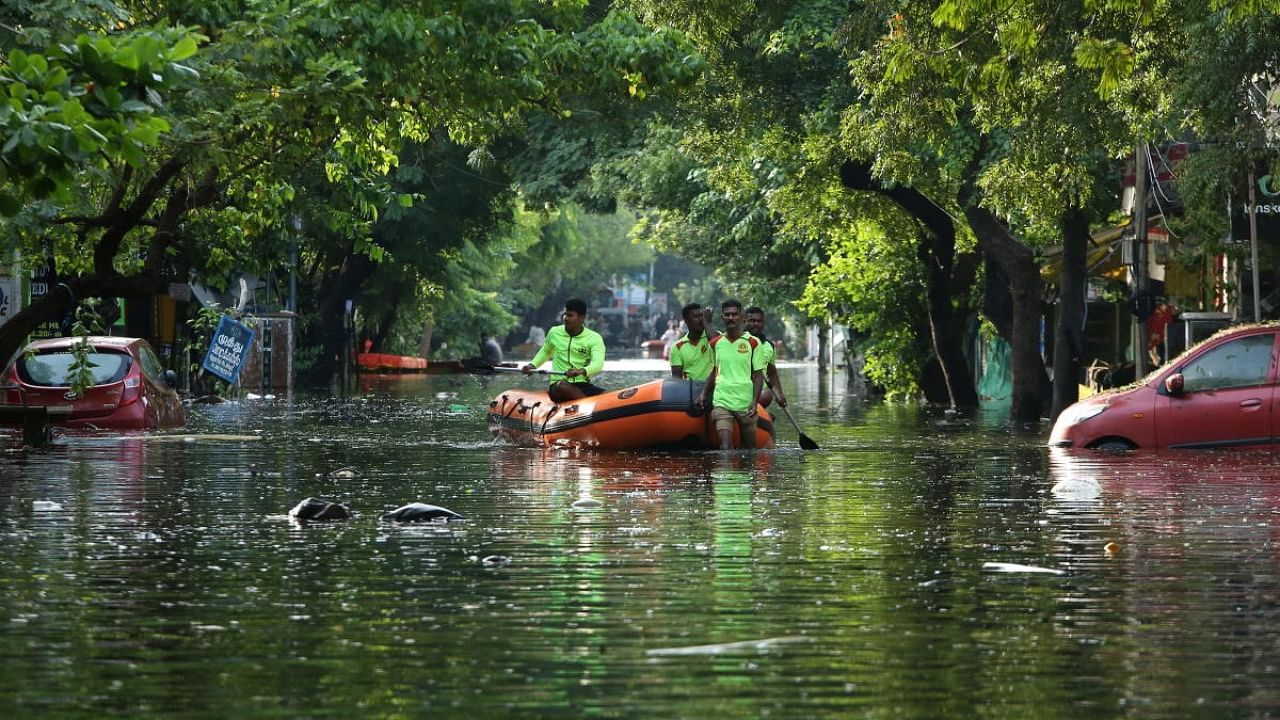
Climate change is increasing the risk of occurrence of natural hazard events at different scales and magnitudes across the world. In India, Chennai rains and the resulting floods are a recent example. While climate change is the prime factor, environmental degradation exacerbates disaster risk, affecting the degree of exposure of societies to floods, landslides, and other hazards. Conventional urban-flood-management approaches alone may fall short as they do not provide the services required to build resilience to deal with the heightened threats. Therefore, there is a need to explore hybrid solutions that harness the potential of natural systems, along with the man-made or ‘grey’ infrastructure that is traditionally adopted.
Today, cities worldwide are exploring options to integrate natural and built measures for flood management. Such efforts include building permeable roads, green roofs, rain gardens, and artificially-constructed wetlands to mimic natural water cycles. These nature-based solutions (NBS) have emerged as an essential tool to boost resilience and improve disaster risk management for sustainable adaptation.
In Bangkok, innovative landscape solutions for building urban resilience have been promoted by Landprocess and Porous City Network. The strategy adopted by them has equipped the city with public green space and nature-based solutions for increasing its resilience, reducing flood risk, and improving the well-being of its citizens. Another example is the Sponge City concept introduced in China. This initiative leverages the benefits of NBS for addressing surface-water flooding, assuaging peak run-off, and promoting water conservation.
Concurrently, it also safeguards environmental quality and community health, and supports economic prosperity. The initiative has integrated “green” and “blue” spaces such as wetlands, with conventional “grey” infrastructure such as concrete barriers. Similarly, in Gorakhpur, nature-based solutions have been used for preventing floods and adaptation. The initiative improved the flood-buffering capacity of the city by promoting climate-resilient integrated agriculture, and through regulatory and incentive mechanisms in the peri-urban areas of the city.
The construction of nature-based solutions is context-specific. Firstly, it has to be informed by the extent of social and economic development and the exposure to floods. Secondly, an area’s hydro-meteorological characteristics need to be acknowledged before integration into the built environment at different scales. Typically, flood protection systems in cities should include structural and non-structural measures.
However, realising the full potential of nature-based solutions is a challeng. These methods do not capture the values associated with NBS and, therefore, are unable to leverage sustainable finance. The ‘stated preference method’ is commonly used for assessing the benefits of NBS, as it evaluates non-marketed goods, such as erosion prevention. In this method, the respondents are asked to value the trade-offs of positive and negative changes in ecosystem services. Alternatively, the ‘damage cost avoided approach’ is applied wherein benefits of avoidance of loss (such as soil erosion prevention) are evaluated for payments. But, non-marketed goods are neglected in this method.
However, recognising the various benefits of NBS and their evaluation can leverage financing from the private sector and community for flood management in cities. Hence, we need more data, and methods that provide the true economic value of NBS. Until then, government funding can support nature-based solutions in the lower-income areas of a city.
For instance, disaster response budgets could be reallocated for incorporating NBS in urban planning, making it a cost-effective preventive measure. Finally, a well-planned urban environment could leverage higher property values by linking floor-area ratio requirements to commitments from investors in NBS.
Cities like Chennai should adopt a framework for implementing nature-based solutions for long-term resolution. A multi-stage process that involves identification of the problem and opportunity, followed by selection, design, and implementation of NBS through stakeholder consultations, and finally, monitoring and evaluation of the co-benefits, should be adopted. Such a framework would be a valuable tool to guide thinking, and identify and realise the multiple benefits of implementing nature-based solutions.
(The writer works at the Center for Study of Science, Technology and Policy (CSTEP), a research-based think tank.)
Watch the latest DH Videos here: